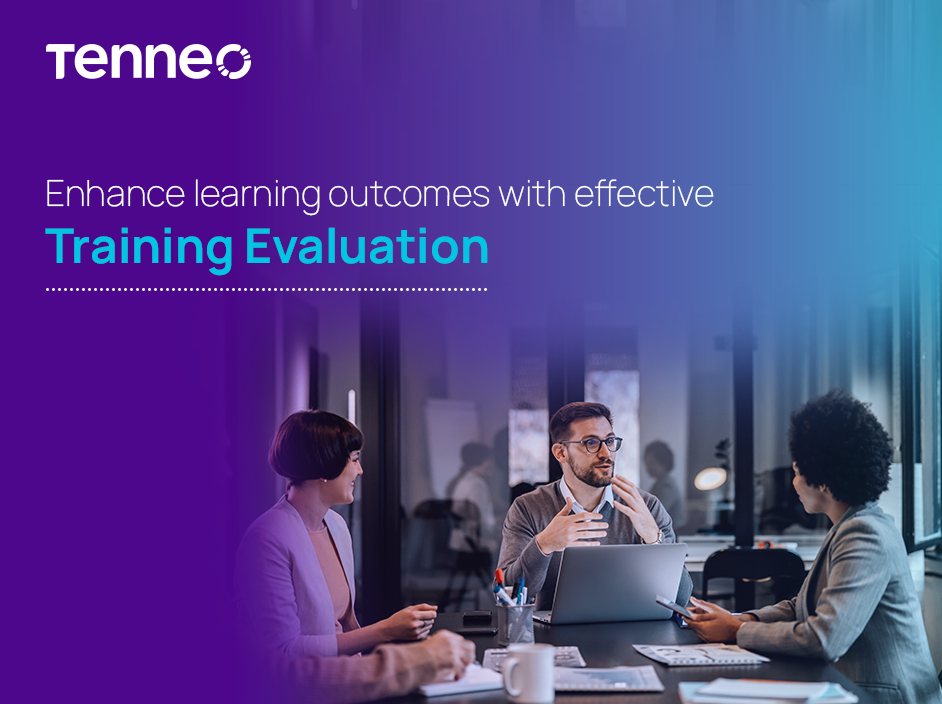
The Onboarding Puzzle: Challenges that HR Leaders Face
August 7, 2023
The Evolution of Training Evaluation: From Traditional to Modern Methods
September 13, 2023
The Onboarding Puzzle: Challenges that HR Leaders Face
August 7, 2023
The Evolution of Training Evaluation: From Traditional to Modern Methods
September 13, 2023Measuring Learning Impact: A Game-Changer for Training Success

In the ever-evolving landscape of workforce development, organizations face a formidable challenge – ensuring that their training initiatives are not just expenditures but investments that yield measurable returns. The path to exceptional training effectiveness is fraught with pitfalls: wasted resources, missed opportunities, and disengaged employees.
Yet, with the right approach, these challenges can be transformed into stepping stones toward organizational success. We will delve into the pressing issue of measuring learning impact, exploring the downside of neglecting it and, more importantly, the transformative benefits of doing so.
The Downside of Not Measuring the Learning Impact
- Wasted Resources and Budgets:
Neglecting the measurement of employee learning impact is akin to sailing in uncharted waters without a map or compass. It leads to a profound misallocation of resources, where time, effort, and budgets are expended on training programs with uncertain outcomes. In this scenario, organizations risk squandering precious resources that could be channeled more effectively elsewhere.
A comprehensive measurement strategy is the compass that guides decision-makers, helping them steer investments toward programs that demonstrably enhance employee skills and drive organizational success. - Missed Opportunities for Improvement:
The failure to measure learning impact is a missed opportunity to glean valuable insights from the educational journey. Imagine driving a car without any feedback on speed, fuel efficiency, or engine performance. Similarly, neglecting measurement prevents organizations from understanding what aspects of their training programs are working and what needs adjustment.
Without this crucial feedback loop, companies may unwittingly perpetuate ineffective training practices, missing the chance to adapt and evolve their programs to meet changing needs. - Lack of Alignment with Business Goals:
Effective training should act as a compass that guides organizations toward their strategic destinations. Neglecting learning impact measurement, however, can leave businesses adrift, disconnected from their overarching goals. Without insights into how training programs contribute to broader business objectives, organizations risk misallocating resources and manpower.
The alignment between learning initiatives and corporate strategies is pivotal, and without proper measurement, achieving this alignment becomes a nebulous and elusive endeavor. - Employee Frustration and Disengagement:
Imagine investing hours in mastering a skill, only to find that it doesn't translate into career growth or enhanced job performance. Neglecting learning impact measurement is a recipe for employee frustration and disengagement. When employees perceive that their learning efforts do not yield tangible benefits, they may become disheartened and demotivated.
This disengagement can lead to higher turnover rates, lower morale, and reduced productivity, affecting not only individual careers but also the overall vitality of the organization.
Benefits of Measuring the Learning Impact
- Improved Training Effectiveness:
Measuring the learning impact is crucial to monitor the effectiveness of training programs. It allows organizations to pinpoint what's working and what's not. Imagine a coach in a sports team who never keeps track of game statistics—success would be elusive. Similarly, organizations can't optimize training without data-driven insights.
The evolution of training evaluation has been remarkable. By measuring learning impact, organizations can adapt their training content and methodologies to maximize their effectiveness, ensuring that every moment of employee learning counts toward tangible skill enhancement and professional development. - Enhanced Employee Performance:
When learning impact is measured and acted upon, the result is a workforce that continually improves and excels. Employees benefit from tailored training experiences that address their specific needs and preferences, leading to better job performance.
A well-measured and adjusted training program can harmonize employee skills and competencies with organizational requirements, creating a symphony of high-performance employees who contribute significantly to the company's success. - Informed Decision-Making:
Effective business leadership thrives on data-informed decisions. Measuring learning impact provides leaders with a treasure trove of insights that can guide strategic choices. It's like navigating a ship with a sophisticated GPS system rather than relying on guesswork. These insights can help in resource allocation, training program selection, and long-term planning.
Decision-makers armed with data can confidently steer their organizations toward growth, knowing that their choices are grounded in evidence and geared toward maximizing return on investment. - Demonstrable ROI on Training Investments:
Businesses invest considerable resources in employee training, and measuring the learning impact is the key to showcasing the ROI of these investments. It's akin to tracking the performance of stocks in a portfolio—a robust measurement system reveals which investments are yielding the best returns.
Organizations can quantify the impact of training on employee performance, retention, and productivity. This ability to demonstrate a clear ROI not only justifies training expenses but also paves the way for future investments in learning and development, ensuring a culture of continuous improvement and growth.
These benefits underscore the transformative power of measuring learning impact. From enhancing training programs and boosting employee performance to informing strategic decisions and showcasing ROI, it's a practice that not only makes good business sense but also ensures that organizations remain agile, competitive, and aligned with their goals.
Conclusion
The journey toward enhanced training effectiveness is illuminated by the capabilities of learning platforms like Tenneo LMS. It provides the tools and insights necessary to measure, analyze, and improve learning impact systematically. By harnessing the power of Tenneo LMS, organizations can make informed decisions, enhance employee performance, and demonstrate the undeniable ROI of their training investments. In doing so, they ensure not only their survival but their thriving in an ever-competitive marketplace, where learning and adaptation are the keys to success.
Boost your employee learning outcomes with effective evaluations. Get in touch with our LearnTech experts.
